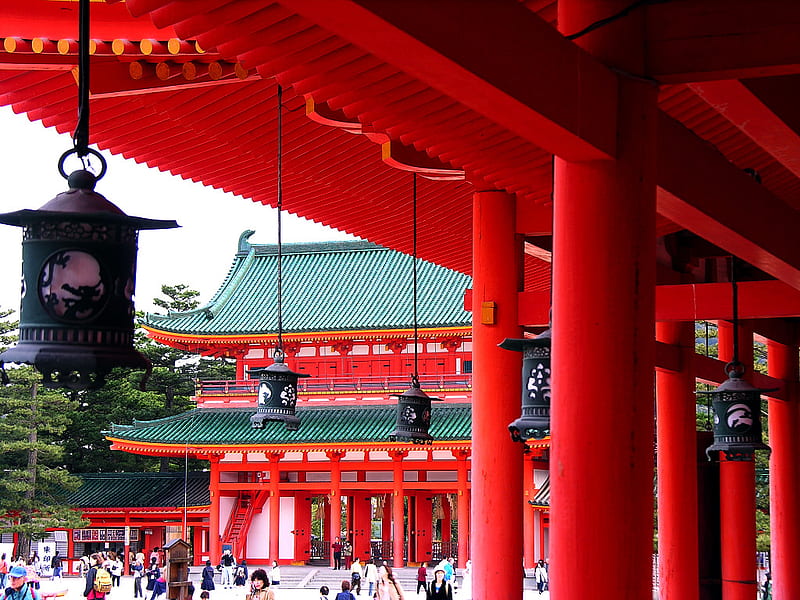
In the heart of Japan, where ancient traditions intertwine with the rhythmic pulse of modern life, lie the serene sanctuaries known as Shinto shrines. These sacred places, dedicated to the kami or spirits, are much more than mere structures; they are embodiments of the country’s rich spiritual heritage. Each shrine, whether nestled in lush forests, perched on mountains, or overlooking tranquil seas, holds a unique story, a whisper from the past that invites visitors to pause, reflect, and connect with something greater than themselves.
As we embark on a journey through Japan’s enchanting Shinto shrines, we will explore the breathtaking landscapes, intricate rituals, and profound beliefs that shape these sacred spaces. From the iconic vermillion torii gates that mark the entrance to divine realms, to the meticulously maintained gardens that evoke a sense of peace, every aspect of these shrines beckons us to delve deeper into the harmony between nature and spirituality. Join us as we uncover the hidden gems and celebrated classics of Shinto shrines in Japan, where ancient whispers continue to resonate in the present.
The History of Shinto Shrines
神社めぐり
Shinto shrines in Japan have deep historical roots that trace back to ancient animistic beliefs and practices. As early as the Jomon period, the indigenous people of Japan worshipped natural elements such as rivers, mountains, and trees, viewing them as embodiments of spiritual forces. This reverence for nature laid the foundation for what would later evolve into Shintoism, a unique faith that centers around the veneration of kami, or spirits.
With the introduction of Buddhism in the sixth century, Shinto began to formalize its practices and structures. During the Heian period, Shinto shrines started to take on architectural styles influenced by Buddhist designs, leading to the development of distinctive shrine architecture. These shrines often dedicated to local kami became central to community life, serving not only as places of worship but also as cultural and social hubs for festivals and rituals.
As Japan underwent various political and social changes, especially during the Edo period, the role of Shinto shrines became more pronounced. The Tokugawa shogunate promoted Shinto as a national religion, encouraging the construction and maintenance of shrines across the country. This period saw an increase in the number of shrines, many of which reflect local traditions and artistic expressions, establishing Shinto as an integral part of Japanese identity and heritage.
Architecture and Design
The architecture of Shinto shrines in Japan reflects a deep connection to nature and spirituality. Traditional designs showcase simplicity and harmony, often using natural materials such as wood and stone. The structures are typically elevated on pillars, allowing for a seamless integration with the surrounding environment. This elevation not only helps protect the buildings from moisture but also symbolizes the connection between the physical and spiritual realms, allowing the divine to descend closer to the Earth.
Another key feature of Shinto shrine architecture is the presence of torii gates, which mark the transition from the mundane to the sacred. These gates are usually constructed of wood or stone and can vary in size and design. They serve as a powerful symbol of purification and serve to indicate the entrance into a sacred space. The brightly colored vermilion torii gates, in particular, are iconic and can be found at numerous shrines throughout Japan, inviting visitors to pause and reflect as they enter.
The layout of shrines often includes several distinct areas, each serving a specific purpose within the shrine complex. Typically, a central honden or main hall houses the kami, or spirit, that the shrine is dedicated to. Surrounding this are auxiliary buildings such as the haiden, or worship hall, where visitors perform rituals and prayers. The natural landscaping, which can include ponds, gardens, and pathways, enhances the spiritual ambiance, allowing visitors to immerse themselves in the serenity and beauty of the space while honoring the traditions that have been passed down through generations.
Cultural Significance and Rituals
Shinto shrines in Japan hold a profound cultural significance as they serve as both spiritual sanctuaries and community gathering spaces. These sites are not merely places of worship; they are deeply interwoven with the traditions and festivals of local communities. Each shrine is dedicated to particular kami, or spirits, which reflect the natural world and its elements. The local populace often views these shrines as protectors of their homes and as sources of guidance in their daily lives.
Rituals performed at Shinto shrines vary throughout the year and are often tied to seasonal changes and agricultural cycles. Important ceremonies, such as the New Year celebrations, involve people visiting shrines to make their first prayers of the year, seeking blessings and good fortune. Other rituals include weddings, where couples often choose a shrine for their ceremonies, as well as seasonal festivals where communities come together to celebrate and pay homage to their kami. These gatherings reinforce communal bonds and pass down traditions to younger generations.
Visitors to Shinto shrines can observe the graceful customs that embody respect and reverence. The act of purification, through washing hands and rinsing the mouth at a chozuya, is a vital part of the experience, emphasizing the importance of cleansing before approaching the sacred. Offerings, such as rice or sake, are commonly made at the shrine, further connecting worshippers to their spiritual heritage. This blend of ritual and community illustrates how Shinto shrines in Japan function as vital cultural hubs, sustaining a rich tapestry of traditions that resonate with the Japanese people.
Visiting Iconic Shrines
Japan is home to numerous Shinto shrines that captivate visitors with their beauty and spiritual significance. One of the most iconic is the Fushimi Inari Taisha in Kyoto, famous for its thousands of vibrant red torii gates that lead up the sacred Mount Inari. Each gate is donated by individuals or businesses, and the inscriptions on them provide a glimpse into the history and culture that intertwine with this site. As you walk through this mesmerizing pathway, the tranquil atmosphere transports you to another realm, where whispers of the kami seem to guide your journey.
Another exceptional shrine is the Ise Jingu, dedicated to Amaterasu, the sun goddess and one of the most revered deities in Shinto belief. Located in Mie Prefecture, this shrine is notable for its architectural beauty and the deep reverence it commands. The Ise Jingu complex consists of many shrines, with the inner shrine, Naiku, being particularly sacred. Pilgrims travel from all over Japan to pay their respects, and the ritual of "shikinen sengu," the periodic rebuilding of the shrine every twenty years, symbolizes the cycle of life and renewal, emphasizing the importance of tradition in Shinto practices.
Visiting the Meiji Shrine in Tokyo offers a different, yet equally enriching experience. Nestled within a beautiful forested area, this shrine honors Emperor Meiji and Empress Shoken, who played a significant role in Japan’s modernization. The tranquility of the surrounding nature provides a peaceful retreat from the bustling city. As visitors approach the main shrine, the grand torii gate welcomes them, reminiscent of Japan’s timeless spirituality. Here, the rituals such as offering prayers and tying wishes to the ema wooden plaques allow guests to connect with the sacred and reflect on their own aspirations.
